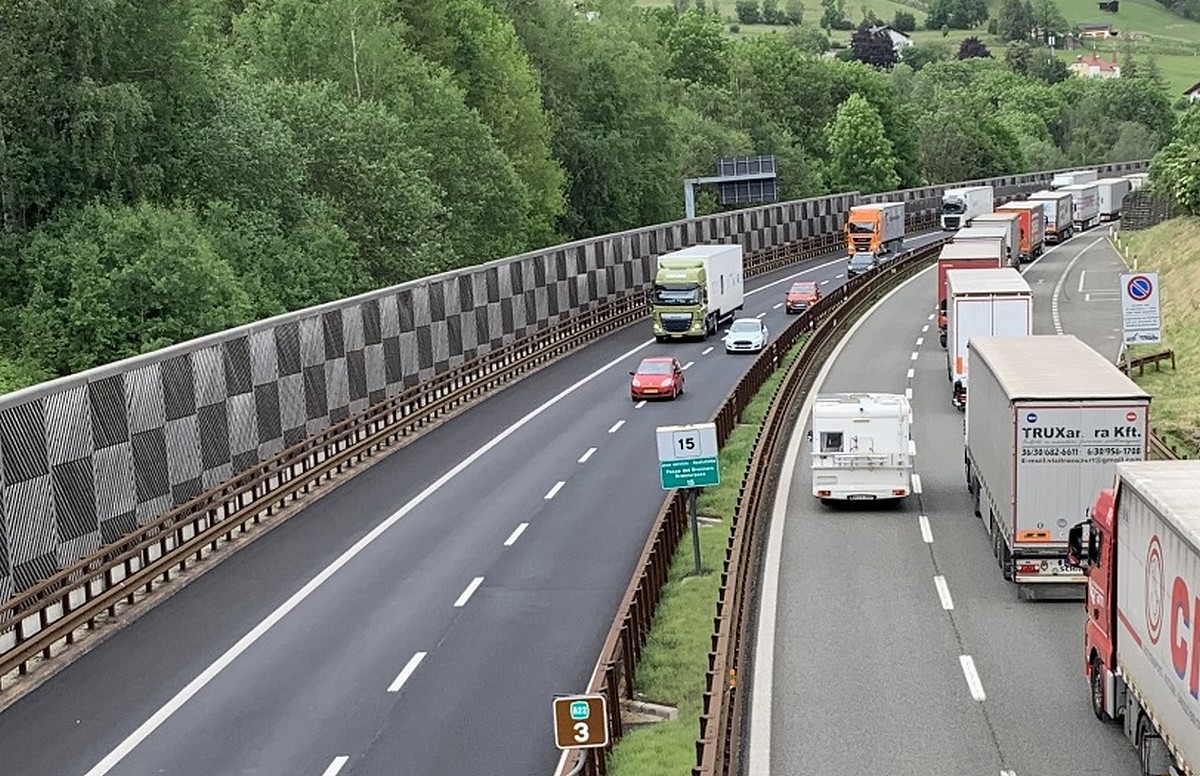For the first quarter of 2025, the Tyrolean authorities have planned seven block clearance days at the German-Austrian border crossing Kufstein-Kiefersfelden. These will occur on days when truck traffic is expected to be heaviest, specifically:
- 7 January (Tuesday after Epiphany)
- 3 February (Monday)
- 10 February (Monday)
- 17 February (Monday)
- 24 February (Monday)
- 3 March (Monday)
- 10 March (Monday)
In comparison, in the first quarter of this year, the Tyrolean government scheduled eight block clearance dates. However, the higher number of block clearance days at the beginning of this year may have been due to the timing of the Easter holiday, which fell in March.
Package of measures
In connection with the renovation of an important section of the A13 motorway, the Lueg Bridge, Asfinag has prepared an extensive package of measures to prevent significant traffic congestion, especially on busy days, while also protecting the local community from alternative traffic.
A pillar of this package is an innovative solution that allows for temporary two-lane traffic during times of exceptionally high traffic volumes. This solution was tested this summer.
As part of this measure, vehicles over 3.5 tonnes must move to the left lane, i.e. to the middle of the bridge, to relieve pressure on the edges. This traffic organisation will be set up flexibly for about 170 days a year, either northbound or southbound, as required. Two-lane traffic following the normal rules would considerably shorten the lifespan of the bridge and is therefore not feasible from the experts’ point of view.
Temporary dual carriageway traffic will be in place for more than 170 days in the direction of Brenner (south) and more than 160 days in the direction of Innsbruck (north). The system is flexible and will be adjusted as needed depending on traffic volumes, which should significantly reduce congestion.
Additionally, Asfinag will implement solutions such as vehicle weighing systems, additional truck bans, sectional speed measurement, and new information boards. It will also conduct a Europe-wide information campaign.
The exact schedule with deadlines will not be published until November.









